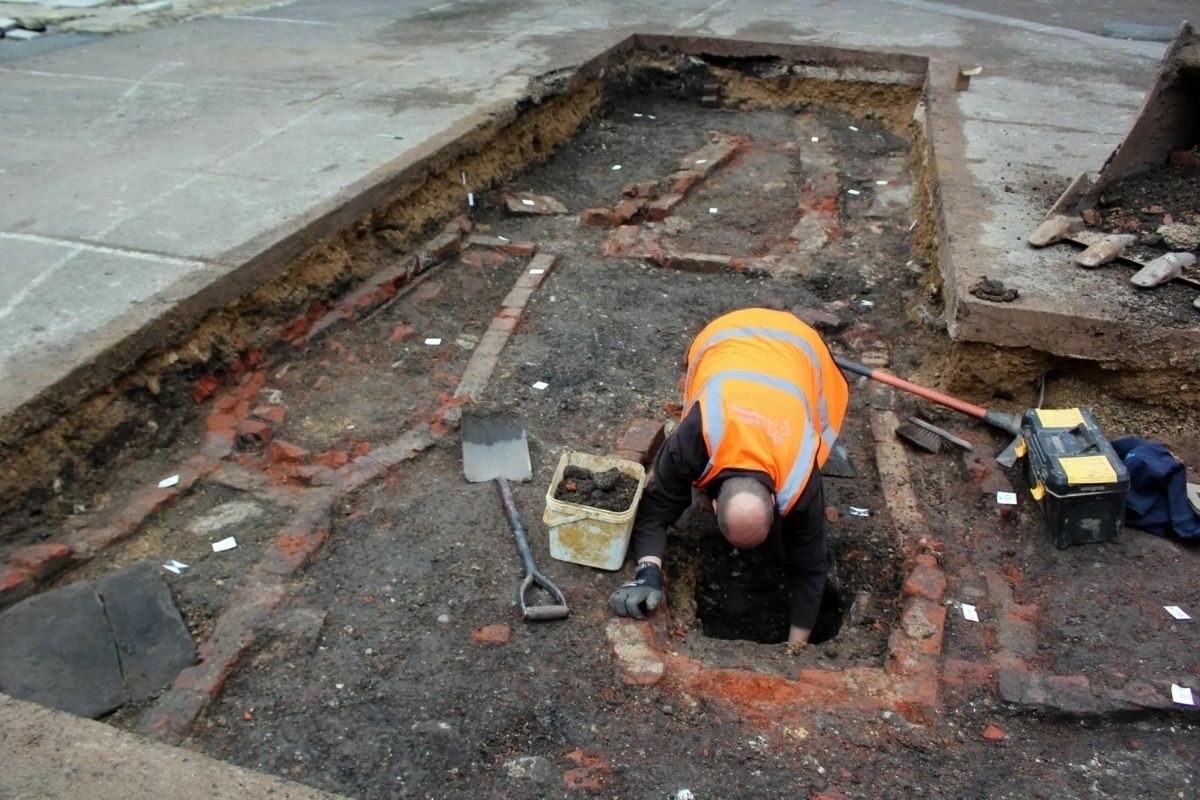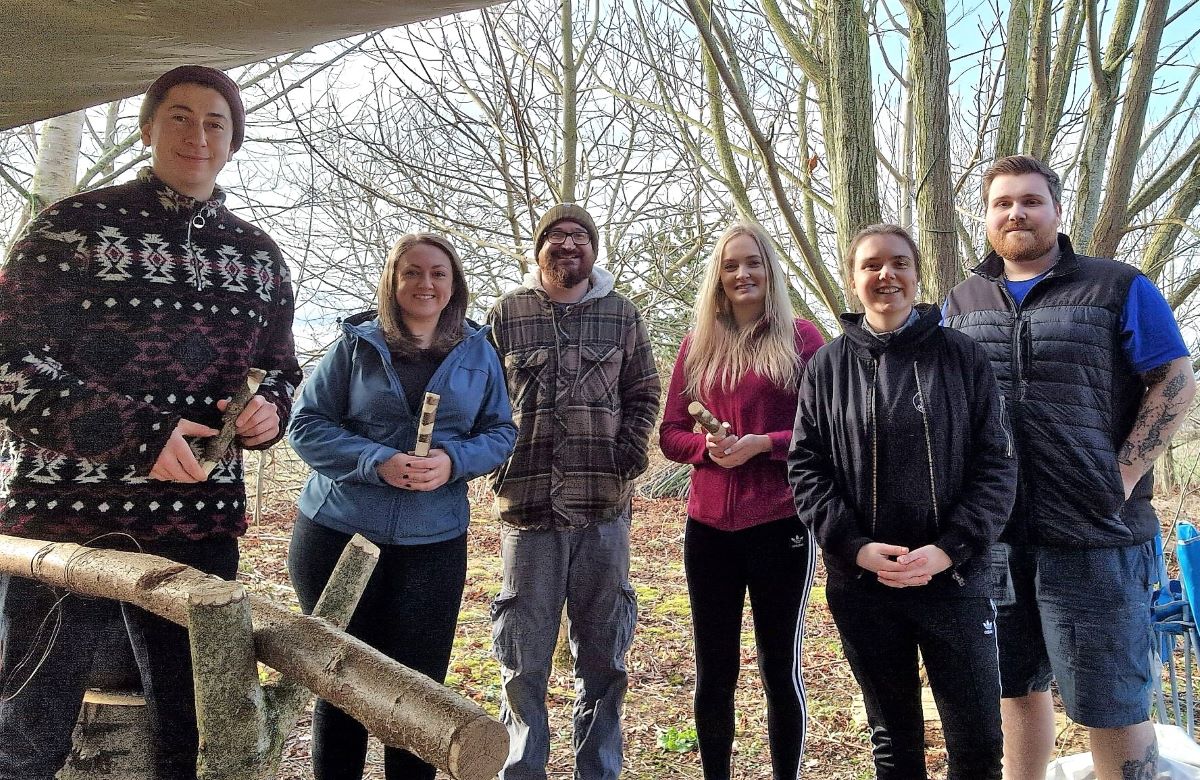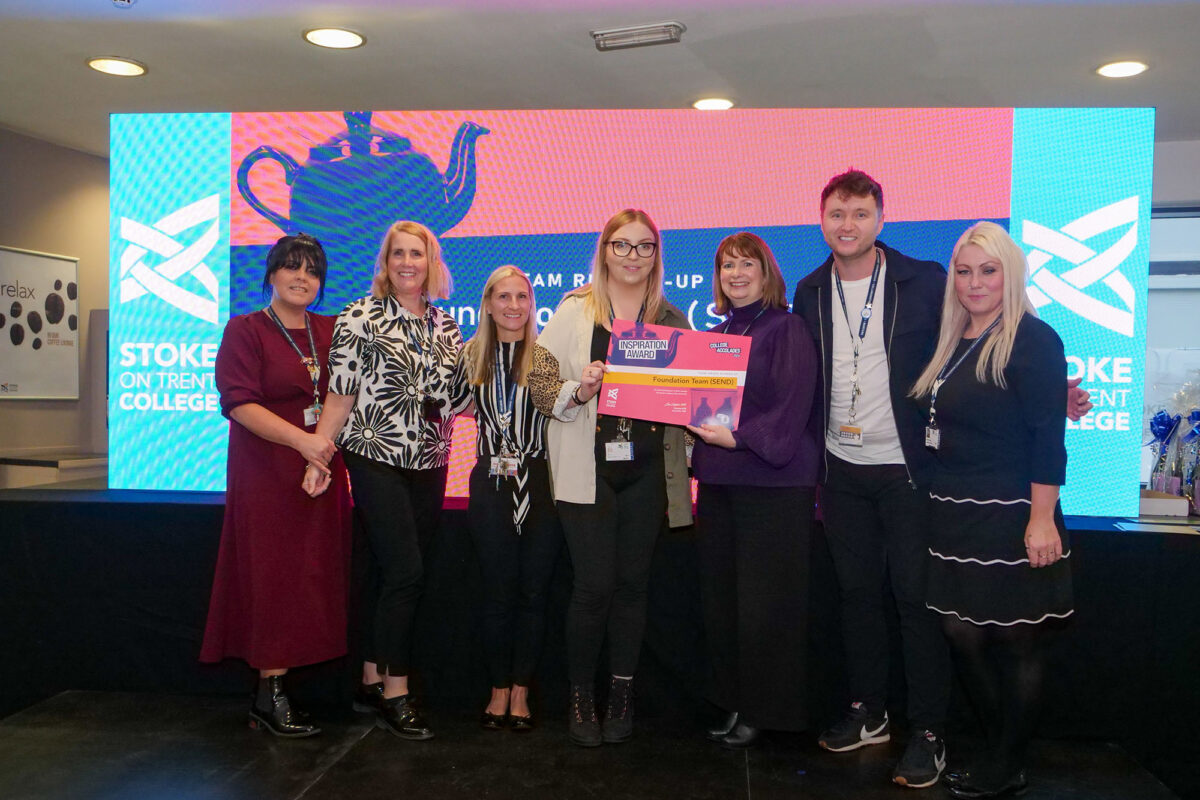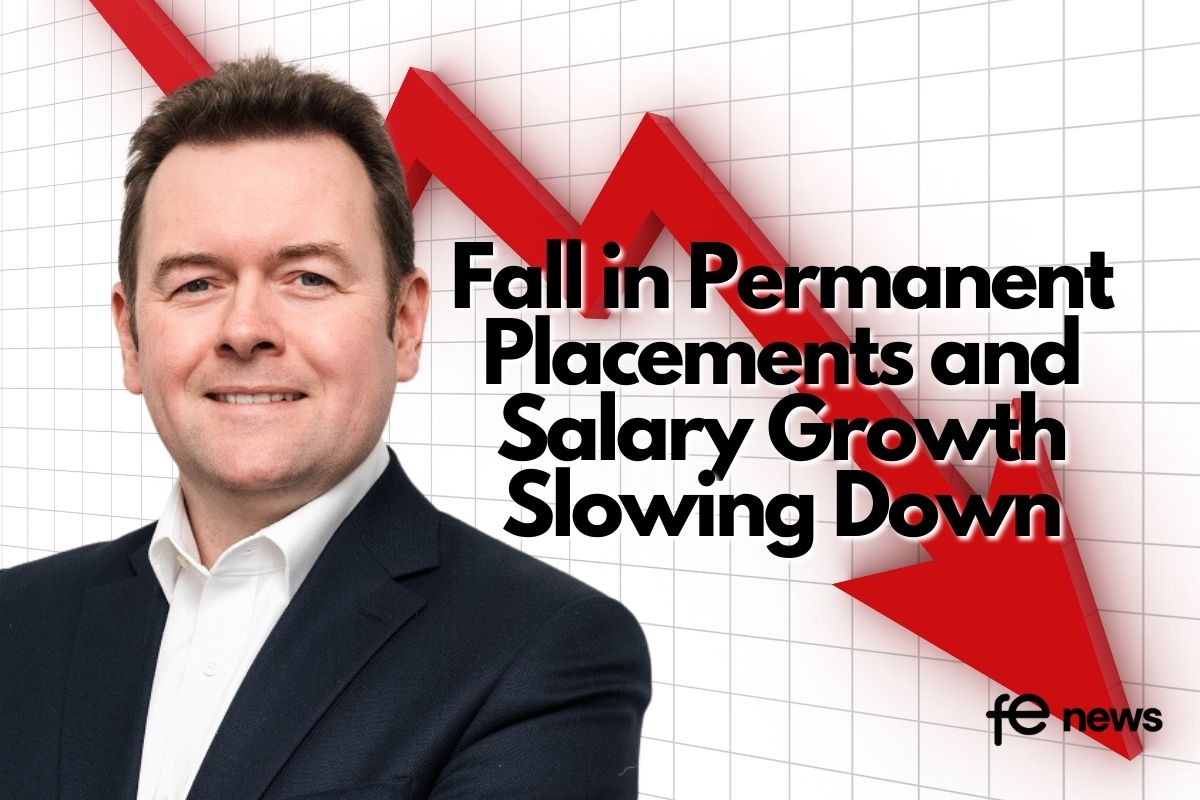Fascinating finds uncovered by archaeologists at University’s City Campus development

A Roman road and wall, an 18th Century crypt and even a possible long buried Medieval church have been discovered by archaeologists beneath the site of University of Gloucestershire’s new City Campus development in Gloucester.
The University commissioned Cotswold Archaeology to carry out an archaeological evaluation at the site of the former Debenhams building, which the University plans to transform into a modern centre for teaching, learning and community partnerships.
With Roman activity beginning in Gloucester in the late AD 40s, the University and the City Council wanted to find out to find out if any archaeological remains survive within the city centre site, to avoid disturbance as City Campus development plans move forward.
In the basement of the building – the former menswear department of Debenhams – Cotswold Archaeology found remains of Roman pottery dated from the 2nd century and the footings of a Roman wall, probably from a townhouse, just below floor level.
They also discovered a cobbled stone surface in the same location that they believe may be part of a Roman road, dating to between the 2nd and 4th centuries, along with a large quantity of Roman roof tiles that may have been used in the road’s construction.
Following work in what was the delivery area for Debenhams, Cotswold Archaeology discovered pillars they believe could be from the nave of the now-demolished St Aldate’s Church, built in the 18th century.
Other finds from the archeological evaluation of the site included fragments of a tobacco pipe, possibly dating from the 16th century, and pieces of a post-Medieval wine bottle.
Brick-built burial vaults and a crypt associated with the now-demolished St Aldate’s Church were identified within a service yard area at the site. This church replaced an earlier medieval church, which had its own churchyard, with its remains likely to lie beneath.
Nigel Wichall, Director of Estates at the University, said:
“Our City Campus development will be another exciting chapter in the rich history of the site, bringing new jobs and investment into a revitalised city centre.
“We are working with our partners on the project to ensure that, as much as possible, the archaeological remains are left undisturbed when the development goes forward.
“A priority for everyone is to ensure that the burials in the former church are left in place, if possible, and at all times treated with respect.”
City Archaeologist, Andrew Armstrong, from Gloucester City Council, said: “The fact that these remains survive so well, despite having been built on, is really exciting.
“We’re looking forwarding to working with University of Gloucestershire to ensure that these remains are protected when possible and carefully excavated if they have to be removed. We’ll keep the people of Gloucester informed as any works progress.”
Cotswold Archaeology Project Manager, Steve Sheldon, said:
“Our recent work at the City Campus has offered a further, highly informative insight into the rich and diverse archaeology that survives beneath our feet in the city of Gloucester.
“It also adds to our understanding of the city’s more recent history, of which the current exciting development will no doubt become part in due course.”
The development of the former Debenhams building into an inclusive, diverse and modern University teaching and learning environment, City Campus, is part of significant plans to regenerate Gloucester city centre.
As well as training the region’s future nurses and teachers, it is estimated that over its lifetime, City Campus will add over £300million of direct and indirect value to the county’s economy, as well as more than 4,000 jobs.











Responses